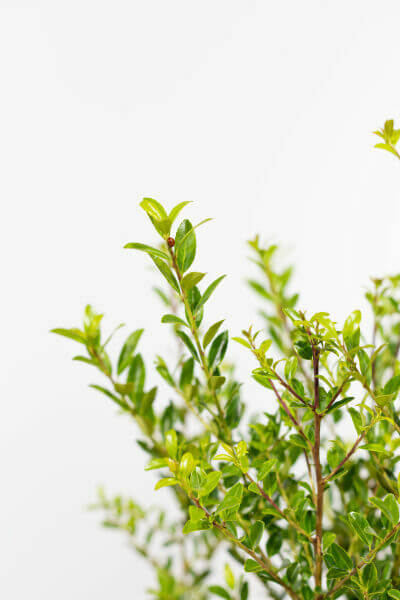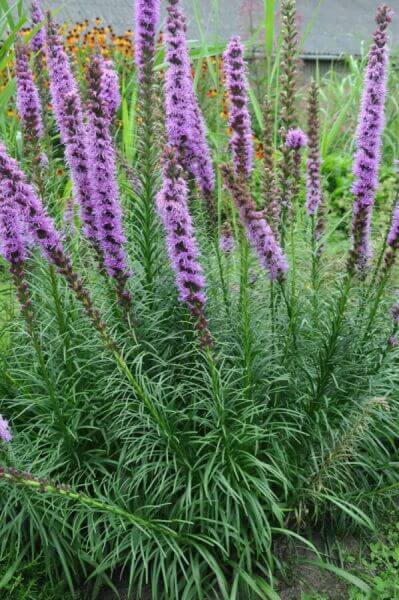Best Hedging Plants For Shape And Form
Best Hedging Plants For Shape And Form
Blog Article
Hedge Plants For Security And Privacy
Improve your garden's allure with lavish hedge varieties such as Yew (Taxus), Thuja, Laurel, Photinia, and Bamboo, commemorated for their structural integrity and environmental advantages.
Yew and Thuja provide evergreen protection and winter season durability, while Laurel offers fast development and broad, fragrant leaves.
Photinia includes seasonal charm with its lively red foliage, and Bamboo lends a low-maintenance, peaceful atmosphere.
These hedges improve air quality, lower noise, and produce tranquil, personal spaces.
Appropriate planting, spacing, and upkeep ensure vigorous development and ecological harmony.
Check out how these lavish varieties can elevate your garden's charm and well-being.
Key Takeaways
Transform Your Garden With Lush Hedge Varieties
- Select Yew for its thick, evergreen growth and unrivaled longevity.
- Select Laurel for its fast development and broad leaves, guaranteeing quick privacy.
- Select Photinia for its lively seasonal foliage, which turns a striking dark red.
- Utilize Bamboo for a low-maintenance, winter-hardy hedge with aesthetic appeal.
- Space plants 2-3 per meter and prune routinely for ideal development and health.
Popular Hedge Plants
When changing a garden with lavish hedge ranges, it's necessary to consider popular hedge plants such as Yew, Thuja, Laurel, and Photinia due to their distinct qualities and advantages.
Yew (Taxus) is extremely respected for its longevity and dense, green growth, making it a prime choice for enduring landscapes.
Thuja is noted for its evergreen foliage and robust winter resilience.
Photinia adds seasonal vibrancy with red leaves that darken over time, developing vibrant visual appeal.
Laurel uses quick development and fragrant, broad leaves, ideal for fast personal privacy.
In Addition, Bamboo is an exceptional option for atmosphere, providing a low-maintenance, winter-hardy option that enhances the garden's visual with its sophisticated, swaying walking sticks.
These selections cater to a variety of horticultural requirements and preferences.
Advantages of Garden Hedges
Garden hedges use a wide variety of benefits, making them an important addition to any landscape. These natural barriers are economical to execute and provide substantial wind security, enhancing air blood circulation and contributing to sound reduction. The thick foliage of hedges like Thuja and Beech guarantees personal privacy by obstructing visibility, producing a secluded and peaceful environment.
Hedges also play an important role in microclimate policy, providing a stable environment that cultivates plant growth and decreases temperature changes. Their elaborate leaf structures filter toxins, improving air quality and adding to a much healthier garden ecosystem.
Furthermore, hedges stand out in noise reduction, soaking up and deflecting sound waves to lower ambient noise levels. This dual performance of supplying both acoustic and visual personal privacy enhances the overall serenity and visual appeal of any garden.
Planting and Upkeep Tips
For a successful hedge, meticulous preparation of the planting area is important. Make sure the soil has correct pH and drainage to support strong root development.
Space the plants appropriately for the selected species. Water the hedge often throughout its initial growth phase, adjusting as needed with seasonal changes.
Execute a methodical insect control and illness avoidance technique, utilizing chemical or natural treatments when needed. Routinely examine for aphids, termites, and fungal infections.
Apply mulch to keep moisture and suppress weeds. Seasonal pruning promotes dense growth and air blood circulation, essential for plant health.
Following these standards will assist you cultivate a dynamic, well-kept hedge that improves the beauty of your garden.
Spacing and Trimming Standards
Spacing and Cutting Guidelines
Proper spacing and cutting are vital for cultivating healthy, aesthetically appealing hedges. Sufficient spacing ensures each plant gets adequate nutrients, light, and air flow.
Follow these standards for optimum hedge maintenance:
- Spacing: Position hedge plants 2-3 plants per meter to encourage robust development.
- Pruning Methods: Regular pruning is essential for keeping preferred hedge height and shape. Trim brand-new growth in summer season and cut back older wood during winter season.
- Seasonal Care: Adjust cutting schedules and techniques according to seasonal requirements to guarantee plant health.
- Hedge Height: Regularly display and trim to keep the desired hedge height and attain uniform looks.
Adhering to these actions will ensure your hedge prospers, boosting both the appeal and functionality of your garden.
Picking the Right Hedge
Choosing the Right Hedge
Choosing the proper hedge involves examining factors such as fully grown height, foliage density, and ecological resilience. Effective hedge plant choice requires understanding each types' development characteristics and site-specific versatility.
For instance, Yew (Taxus) uses excellent longevity and dense development, while Thuja is significant for its winter durability. Furthermore, thinking about upkeep requirements is crucial; fast-growing species like Laurel or Privet demand regular trimming, whereas low-maintenance choices like Bamboo or Ivy may be more effective for those looking for very little maintenance.
Environmental factors such as soil type, light accessibility, and moisture conditions ought to also direct the selection process. This cautious method guarantees the selected hedges will flourish, offering both functional and aesthetic advantages to the garden landscape.
Shipment and Planting Suggestions
To guarantee your hedge plants prosper, they must be delivered by specialized couriers and planted promptly upon arrival.
Follow these essential actions for effective planting:
- Soil Preparation: Improve the soil with raw material to improve drain and nutrient content.
- Planting Depth: Develop a trench twice the width and equivalent to the depth of the root ball.
- Watering Strategies: Water thoroughly after planting, keeping the soil consistently damp however not filled.
- Mulching: Apply a layer of mulch to retain moisture and suppress weeds.
Customer Assistance and Service
Offered the essential role of prompt help in horticultural pursuits, our consumer support team is available six days a week through telephone, email, and social networks to provide skilled suggestions and swiftly address any concerns. Their dedication to quick response times ensures client complete satisfaction by fixing inquiries associated with plant health, ideal planting techniques, and upkeep schedules.

Reaction Time
----------------------
This thorough support group, enhanced by a stellar 9.3/ 10 client ranking, highlights our dedication to enhancing the gardening experience for each customer.
Regularly Asked Questions
How Long Does It Take for Hedge Plants to Develop?
Hedge plants usually require one to three years to become completely developed, with the precise period differing by types and growing conditions.
Reliable care throughout this important duration is necessary for robust development. Constant watering, watchful weed control, and suitable fertilizer application are critical in promoting strong root development.
For example, fast-growing species like Laurel may develop faster, while slower-growing ranges such as Yew may take longer. Persistent maintenance accelerates the facility procedure, resulting in healthy and dense hedges.
What Are the Finest Hedge Plants for Personal Privacy?
The concern of the best hedge plants for privacy involves examining evergreen and deciduous alternatives.
Evergreen hedges like Thuja, Laurel, and Cypress offer year-round coverage, ensuring constant privacy.
In contrast, deciduous hedges such as Beech use seasonal personal privacy, shedding leaves in chillier months.
Key upkeep ideas for privacy click here hedges consist of routine trimming, fertilizing in spring, and correct spacing-- usually 2 to 3 plants per meter.
Additionally, constant watering and persistent weed removal are vital for promoting healthy, dense growth.
Can Hedge Plants Draw In Wildlife to My Garden?
Yes, hedge plants can draw in wildlife to your garden by supplying vital benefits like shelter, food, and nesting websites, thus boosting local biodiversity. For instance, yew, holly, and laurel are outstanding for attracting birds, while ivy supports a range of insects.
Nevertheless, it's important to keep in mind that there are some drawbacks, such as increased maintenance to handle pests and routine maintenance. Thoroughly choosing and keeping hedge varieties can assist balance these drawbacks and advantages, eventually fostering a lively and sustainable community in your garden.
Are There Any Blooming Hedge Plants Available?
Yes, there are flowering hedge plants available that can enhance the charm of your garden.
For instance, Elaeagnus, also known as Olive Willow, produces aromatic white flowers in the fall, including a touch of elegance.
Photinia, another popular choice, showcases dynamic red leaves that grow into an abundant green, creating a dynamic visual impact throughout the seasons.
To make sure these plants thrive, it's vital to practice appropriate pruning strategies and seasonal upkeep, such as trimming new growth in the summertime and cutting down in the winter season.
These procedures will assist keep the health and aesthetic appeal of your flowering hedges.
How Do I Prevent Pests in My Hedge Plants?
To avoid insects in hedge plants, employ natural insect control approaches and keep proper hedge care. Introduce useful pests like ladybugs, which victimize harmful pests, to create a balanced community.
Routinely examine your hedges for indications of problem and without delay get rid of any affected parts to prevent the spread. Ensure the health of your hedges by applying well balanced fertilizers and providing adequate water.
Make use of mulching to maintain soil wetness and correct spacing to minimize plant tension and promote robust growth. These practices collectively help in decreasing insect problems and maintaining a healthy hedge.
Conclusion
In essence, choosing the right hedge ranges such as Yew, Thuja, and Laurel can change any garden into a peaceful haven. These plants supply year-round plant, enhance visual appeal, and deal practical advantages like sound reduction and wind protection.
Correct planting methods, accurate spacing, constant watering, and seasonal trimming are vital for optimum growth.
Dependable delivery services and skilled customer assistance guarantee a seamless experience from purchase to planting, making it easier than ever to elevate your outside space.
Garden hedges use a wide variety of benefits, making them an important addition to any landscape. These natural barriers are cost-effective to carry out and provide substantial wind security, boosting air flow and contributing to sound reduction. The thick foliage of hedges like Thuja and Beech ensures personal privacy by obstructing exposure, creating a secluded and serene environment.

Pruning Methods: Regular pruning is essential for keeping wanted hedge height and shape. Trim new development in summertime and cut back older wood during winter season.
Report this page